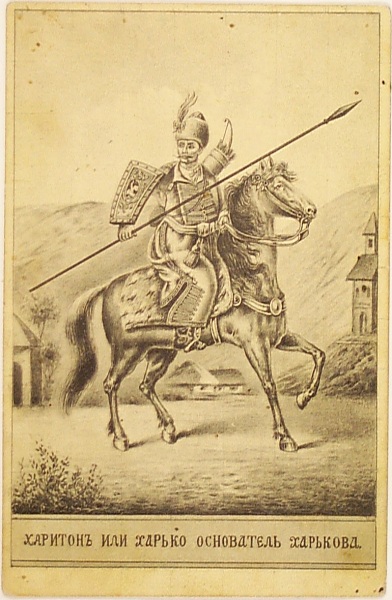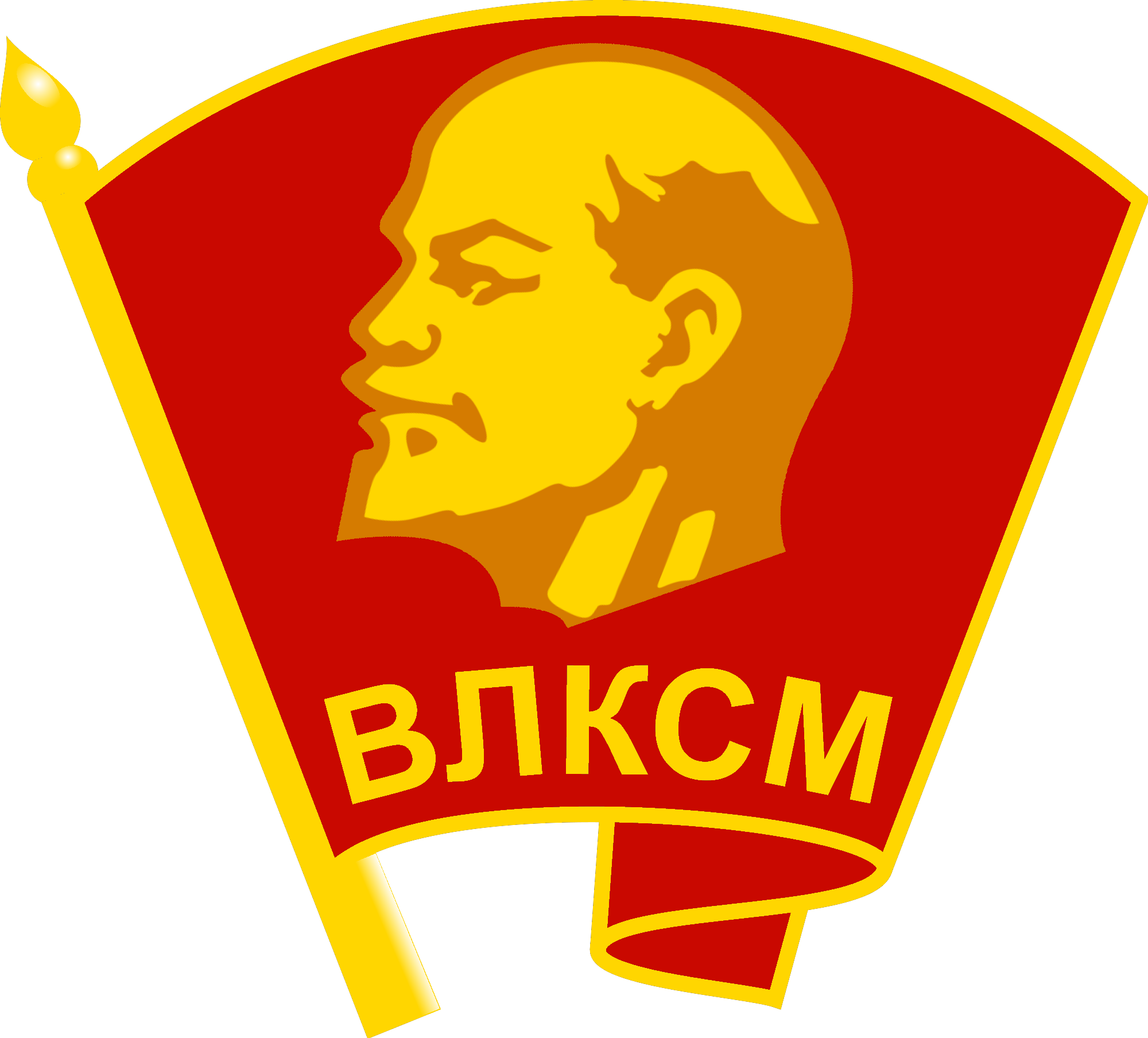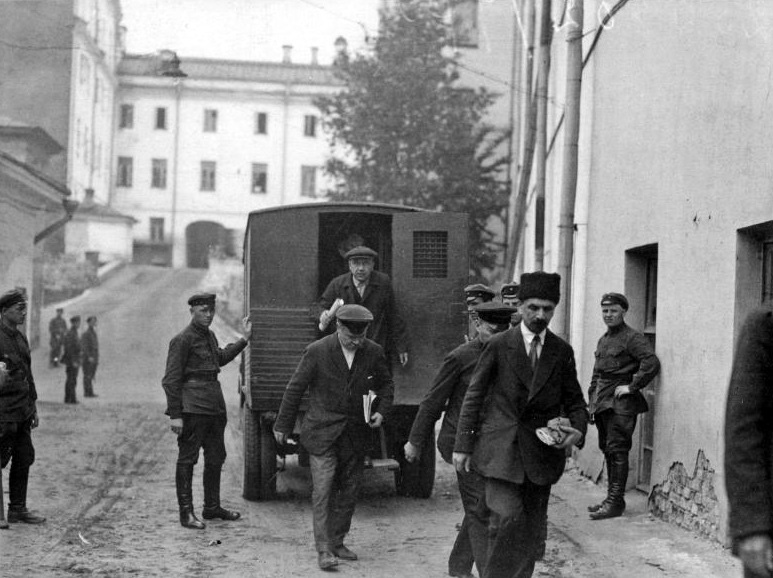|
Union For The Freedom Of Ukraine Trial
The trial of the Union for the Liberation of Ukraine ( ua, Процес Спілки Визволення України ; ) was a court trial considered one of the show trials in the Soviet Union. The event took place in the Opera Theatre in Kharkiv (at that time the Ukrainian State Central Opera) from March 9 to April 19, 1930. Forty-five Ukrainian intellectuals, theologians, writers, and a librarian were accused of ''anti-state'' activities (or counter-revolutionary activities for some). Fifteen of the defendants worked in the organization of the All-Ukrainian Academy of Science. About thirty of them were members of former Ukrainian political parties. One was a former prime-minister while two others were ministers of the Ukrainian People's Republic. Finally, six were members of the Central Rada. Amongst those 45 defendants, two were of Jewish background and three were female. According to the Museum of Soviet Occupation, this proceeding became a sort of political slogan to ... [...More Info...] [...Related Items...] OR: [Wikipedia] [Google] [Baidu] |
Kharkiv
Kharkiv ( uk, wikt:Харків, Ха́рків, ), also known as Kharkov (russian: Харькoв, ), is the second-largest List of cities in Ukraine, city and List of hromadas of Ukraine, municipality in Ukraine.Kharkiv "never had eastern-western conflicts" ''Euronews'' (23 October 2014) Located in the northeast of the country, it is the largest city of the historic Sloboda Ukraine, Slobozhanshchyna region. Kharkiv is the administrative centre of Kharkiv Oblast and of the surrounding Kharkiv Raion. The latest population is Kharkiv was founded in 1654 as Kharkiv fortress, and after these humble beginnings, it grew to be a major centre of industry, trade and Ukrainian culture in the Russian Empire. At the beginning of the 20th century, ... [...More Info...] [...Related Items...] OR: [Wikipedia] [Google] [Baidu] |
Kyiv
Kyiv, also spelled Kiev, is the capital and most populous city of Ukraine. It is in north-central Ukraine along the Dnieper, Dnieper River. As of 1 January 2021, its population was 2,962,180, making Kyiv the List of European cities by population within city limits, seventh-most populous city in Europe. Kyiv is an important industrial, scientific, educational, and cultural center in Eastern Europe. It is home to many High tech, high-tech industries, higher education institutions, and historical landmarks. The city has an extensive system of Transport in Kyiv, public transport and infrastructure, including the Kyiv Metro. The city's name is said to derive from the name of Kyi, one of its four legendary founders. During History of Kyiv, its history, Kyiv, one of the oldest cities in Eastern Europe, passed through several stages of prominence and obscurity. The city probably existed as a commercial center as early as the 5th century. A Slavs, Slavic settlement on the great trade ... [...More Info...] [...Related Items...] OR: [Wikipedia] [Google] [Baidu] |
Chervonyi Shliakh
''Chervonyi Shliach'' ( uk, Черво́ний шлях) was a political and literary-scientific monthly that was founded in 1923 in Kharkiv, Ukraine. It continued to be published until February 1936. The first directors of the magazine were prominent Ukrainian statesmen, Hryhoriy Hrynko, who was replaced, due to his transfer to Moscow sometime in mid 1923, by Oleksandr Shumsky. Shumsky was fired from the position as well as the position of People's Commissar of Education in 1926 for nationalistic deviation. For a short period of time the position of director was given to Mykhailo Yalovy and Mykola Khvylovy, who were eventually displaced for nationalistic deviations. In 1927 the magazine was headed by Volodymyr Zatonsky. The magazine published the work of major Ukrainian writers and journalists such as Ivan Kulyk, Pavlo Tychyna, Pavlo Khrystiuk, Mykola Skrypnyk, V. Yurynets, and many others. During the 1920s the magazine published works representative of a variety of politica ... [...More Info...] [...Related Items...] OR: [Wikipedia] [Google] [Baidu] |
Mykola Skrypnyk
Mykola Oleksiiovych Skrypnyk ( uk, Микола Олексійович Скрипник; – 7 July 1933), also known as Nikolai Alekseyevich Skripnik (russian: Никола́й Алексе́евич Скри́пник), was a Ukrainian Bolshevik revolutionary and Communist leader who was a proponent of the Ukrainian Republic's independence, and later led the cultural Ukrainization effort in Soviet Ukraine. When the policy was reversed and he was removed from his position, he committed suicide rather than be forced to recant his policies in a show trial. He also was the Head of the Ukrainian People's Commissariat, equivalent to the modern-day position of Prime Minister of Ukraine. Early life and career Skrypnyk was born in the village Yasynuvata of Bakhmut uyezd, Yekaterinoslav Governorate, Russian Empire in the family of a railway telegraph operator, assistant to the chief of the railway station; his mother worked as a midwife in the Zemstvo hospital. At first he studied a ... [...More Info...] [...Related Items...] OR: [Wikipedia] [Google] [Baidu] |
Komsomol
The All-Union Leninist Young Communist League (russian: link=no, Всесоюзный ленинский коммунистический союз молодёжи (ВЛКСМ), ), usually known as Komsomol (; russian: Комсомол, links=no ()), a syllabic abbreviation of the Russian ), was a political youth organization in the Soviet Union. It is sometimes described as the youth division of the Communist Party of the Soviet Union (CPSU), although it was officially independent and referred to as "the helper and the reserve of the CPSU". The Komsomol in its earliest form was established in urban areas in 1918. During the early years, it was a Russian organization, known as the Russian Young Communist League, or RKSM. During 1922, with the unification of the USSR, it was reformed into an all-union agency, the youth division of the All-Union Communist Party. It was the final stage of three youth organizations with members up to age 28, graduated at 14 from the Young Pioneer ... [...More Info...] [...Related Items...] OR: [Wikipedia] [Google] [Baidu] |
The Executed Renaissance
''The Executed Renaissance, An Anthology, 1917–1933: Poetry, prose, drama and essay'' ( uk, «Розстріляне відродження: Антологія 1917—1933: Поезія—проза—драма—есей») is an anthology of works by Ukrainian poets and prosaists of the 1920s and 1930s. The term's origin is attributed to the Ukrainian emigré and literary critic Yuriy Lavrinenko, who published the anthology in 1959 in Paris with the support of Jerzy Giedroyc, a Polish writer and activist. The anthology itself is based on the idea of the "Executed Renaissance," which Giedroyc coined to describe the hundreds of writers -- both Ukrainian literati and intellectuals -- who were arrested and executed under Joseph Stalin. This cultural elite became a target during the Great Terror (August 1937 to November 1938) because they were in a position to expose oppression and betrayal and could quickly become the targets of treason themselves. During the 1917 Revolution, the ... [...More Info...] [...Related Items...] OR: [Wikipedia] [Google] [Baidu] |
Prompartiya
The Industrial Party Trial (November 25 – December 7, 1930) (russian: Процесс Промпартии, Trial of the ''Prompartiya'') was a show trial in which several Soviet scientists and economists were accused and convicted of plotting a coup against the government of the Soviet Union. Nikolai Krylenko, deputy People's Commissar (minister) of Justice, assistant Prosecutor General of the RSFSR and a prominent Bolshevik, prosecuted the case. The presiding judge was Andrey Vyshinsky, later Krylenko's opponent who became notorious as the prosecutor at the Moscow Trials in 1936-1938. The defendants were a group of notable Soviet economists and engineers, including Leonid Ramzin, Peter Osadchy (Пётр Осадчий), Nikolai Charnovsky (Николай Чарновский), Alexander Fedotov (Александр Федотов), Victor Larichev (Виктор Ларичев), Vladimir Ochkin (Владимир Очкин), Ksenofont Sitnin (Ксенофонт Ситнин), ... [...More Info...] [...Related Items...] OR: [Wikipedia] [Google] [Baidu] |
Shakhty Trial
The Shakhty Trial (russian: Ша́хтинское де́ло) was the first important Soviet show trial since the case of the Socialist Revolutionary Party in 1922. Fifty-three engineers and managers from the North Caucasus town of Shakhty were arrested in 1928 after being accused of conspiring to sabotage the Soviet economy with the former owners of the coal mines. The trial was conducted on May 18, 1928 in House of Trade Unions, Moscow. The Trial In 1928, the local OGPU arrested a group of engineers, including Peter Palchinsky, Nikolai von Meck and A. F. Velichko, in the North Caucasus town of Shakhty, accusing them of conspiring with former owners of coal mines, who were living abroad and barred from the Soviet Union since the Revolution, to sabotage the Soviet economy. The group was charged with a multitude of crimes, including planning the explosions in the mines, buying equipment from foreign companies that was not needed, incorrectly administering labor laws and safety ... [...More Info...] [...Related Items...] OR: [Wikipedia] [Google] [Baidu] |
Solovetsky Islands
The Solovetsky Islands (russian: Солове́цкие острова́), or Solovki (), are an archipelago located in the Onega Bay of the White Sea, Russia. As an administrative division, the islands are incorporated as Solovetsky District of Arkhangelsk Oblast, Russia.Law #65-5-OZ Within the framework of municipal divisions, they are incorporated as Solovetskoye Rural Settlement within Primorsky Municipal District.Law #258-vneoch.-OZ The administrative center of both divisions is the settlement of Solovetsky, located on Bolshoy Solovetsky Island. Almost all of the population of the islands lives in Solovetsky. As of the 2010 Census, the district had a population of 861 inhabitants. The Solovetsky Monastery (founded in 1436), in 1923 became the site of the first Gulag establishment, the Solovki prison camp. Geography The archipelago has a total area of and consists of six islands: * Bolshoy Solovetsky Island, * Anzersky Island (Anzer), * Bolshaya Muksalma, ... [...More Info...] [...Related Items...] OR: [Wikipedia] [Google] [Baidu] |
Vinnytsia
Vinnytsia ( ; uk, Вінниця, ; yi, װיניצע) is a city in west-central Ukraine, located on the banks of the Southern Bug. It is the administrative center of Vinnytsia Oblast and the largest city in the historic region of Podillia. Administratively, it is incorporated as a town of oblast significance. It also serves as an administrative center of Vinnytsia Raion, one of the 6 districts of Vinnytsia Oblast, though it is not a part of the district. It has a population of . The city's roots date back to the Middle Ages. It was under Lithuanian and Polish control for centuries until the Russian Empire annexed it in 1793. During the 1930s and early 1940s the city was the site of massacres, first during Stalin's purges and then during the Holocaust in Ukraine and the Nazi occupation. A Cold War–era airbase was located near the city. Name The name of Vinnytsia appeared for the first time in 1363. It is assumed that the name is derived from the old Slavic word "Vino", ... [...More Info...] [...Related Items...] OR: [Wikipedia] [Google] [Baidu] |
Chernihiv
Chernihiv ( uk, Черні́гів, , russian: Черни́гов, ; pl, Czernihów, ; la, Czernihovia), is a city and municipality in northern Ukraine, which serves as the administrative center of Chernihiv Oblast and Chernihiv Raion within the oblast. Chernihiv's population is The city was designated as a Hero City during the 2022 Russian Invasion of Ukraine. Geography Chernihiv stands on the Desna River to the north-north-east of Kyiv. The area was served by Chernihiv Shestovytsia Airport prior to 2002, and during the Cold War it was the site of Chernihiv air base. History Etymology The name "Chernihiv" is a compound name, which begins with the root 'Cherni/Cherno,' which means "black" in Slavic. Scholars vary with interpretations of the second part of the name ("hiv"/gov", "говъ") though scholars such as Dr. Martin Dimnik, Professor of Medieval History at University of Toronto, connect Cerhnihov with the worship of "the black god" Chernibog. Early history ... [...More Info...] [...Related Items...] OR: [Wikipedia] [Google] [Baidu] |
Mykolaiv
Mykolaiv ( uk, Миколаїв, ) is a List of cities in Ukraine, city and List of hromadas of Ukraine, municipality in Southern Ukraine, the Administrative centre, administrative center of the Mykolaiv Oblast. Mykolaiv city, which provides Ukraine with access to the Black Sea, is the location of the most downriver bridge crossing of the Southern Bug river. This city is one of the main shipbuilding centers of the Black Sea. Aside from three shipyards within the city, there are a number of research centers specializing in shipbuilding such as the State Research and Design Shipbuilding Center, Zoria-Mashproekt and others. As of 2021, the city has a population of Mykolaiv holds the honorary title Hero City of Ukraine. The city serves as a transportation hub for Ukraine, containing a sea port, commercial port, river port, highway, Junction (rail), railway junction, and airport. Much of Mykolaiv's land area consists of Park, parks. Park Peremohy (''Victory'') is a large park on ... [...More Info...] [...Related Items...] OR: [Wikipedia] [Google] [Baidu] |

.jpg)
.jpg)




.jpg)
